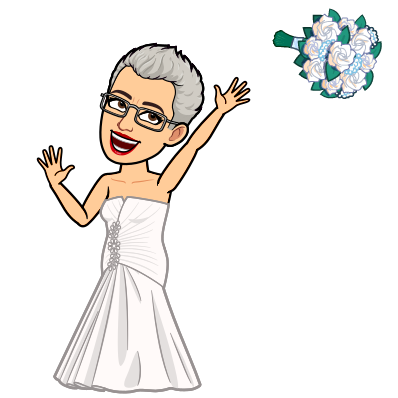So You Think You Can Dance
We estimate that our school has been "employing" celebrity judges at the annual So You Think You Can Dance celebration of dance for a decade. If so, happy tenth birthday to the event! This year, our theme was Aladdin, so our judges were Princess Jasmine, Aladdin, and the Genie. Our hostess added class to the affair by wearing not one, but two ball gowns!
The "teachers-in-role" were absolutely phenomenal! Their costumes worked perfectly and we all agreed that changing our hair with wigs and/or temporary black hair dye really helped us get into character. Thanks to Kerri Commisso, Tina Voltsinis, and Fiona Hopkins for being improvisational experts and delighting students of all ages. When I say all ages, I truly mean it. We paused the dance presentations mid-way so we could give the audience a stretch, take a recess break, and take selfies with some classes; some Grade 8s expressed disappointment that the "cast" did not make it up to their classroom for photos before resuming the show. We also had teachers who had never experienced the way we run SYTYCD who were really entertained by the dances and the positive ad-libbed commentary from the judges.
Clothes make the (hu)man, that's for sure! Last year, I was the only judge that didn't have to wear face paint, but this year, I was super-blue. Photos (like the one below) showed me that I wasn't great at getting all the parts I needed transformed, but I guess I should have acquired more helpers to assist with the make-up. I just didn't want Aladdin or Jasmine to touch me too much and mess up their own outfits. One Grade 2 complained the next day that I should have used a bald cap and coloured that blue as well, but considering that we tried to go to very little expense to create these outfits, I was pleased with the result.
Guest Speakers to End Hair Unit for Media
Mrs. Quon looked like she was having just as much fun, if not more, than the students! She is also super-quick - it only took her a couple of minutes to create elaborate braids.
Mrs. Quon gave us tips as she worked. One piece of advice was to put your fingers in a V and poking a ponytail in the middle of the V to get three even strands of hair to make a braid.
Mrs. Quon made braids I hadn't even heard of before! The above photo on the left is a pair of French braids. The above photo on the right is a Dutch braid.
Mrs. Quon demonstrated to us that braiding can even be done on yourself. She said that the key is to practice - great advice for almost any task or skill to be learned! I wish I had a tutor like Mrs. Quon back when my daughter had super-long hair! The great thing was that Mrs. Quon is the same ethnicity as many of my students, so she was both a community role-model and knew about the ins and outs of "Asian hair".
It wasn't just for the long-haired students either! Mrs. Quon described the hair of the student volunteers and explained how it is important to care for your hair even when it is short. She showed us how to properly towel-dry our hair (by squeezing, rather than vigorously rubbing, which can cause split ends) and how gel can make short hair have versatile looks, including mohawks!
In our hair unit for media, I also made a conscious point of discussing covered hair. I mentioned we had three guests. We were also very fortunate to have Islam Issa, the mother of three students at our school, agree to come in to talk about how to wear a hijab. Mrs. Issa came on the same day as Mrs. Quon, and both women were able to speak to four out of my five primary division classes. One of our Grade 8 students volunteered to address the class that wasn't able to hear the other speakers and she, like Mrs. Issa, brought in all the items necessary for students to be able to try on the hijab. Mrs. Issa was a wonderful speaker, informative and age-appropriate. She answered questions effectively, satisfying their curiosity. As part of one of my previous lessons, students jigsaw-researched on the turban, the kippah and the hijab, so they knew a little bit, but not much. They were much more interested in finding answers by asking a person than they were by reading an article. They asked if she wears the hijab to sleep. They asked if she could wear the hijab to swim. They asked if she gets hot wearing the hijab. They asked if she could hear okay while wearing the hijab. They asked when you start wearing the hijab. They asked about "that hijab that covers your whole face" (the burqa). There were lots of questions and Mrs. Issa (and our student presenter) answered them all.
Above is the "before" photo, and below is the "after" photo. What I really loved and admired was how, when the call was put forth for volunteers, both boys and girls put up their hands. Mrs. Issa explained that for Muslims, only girls usually wear hijabs, but she allowed the boys to try it on.




































